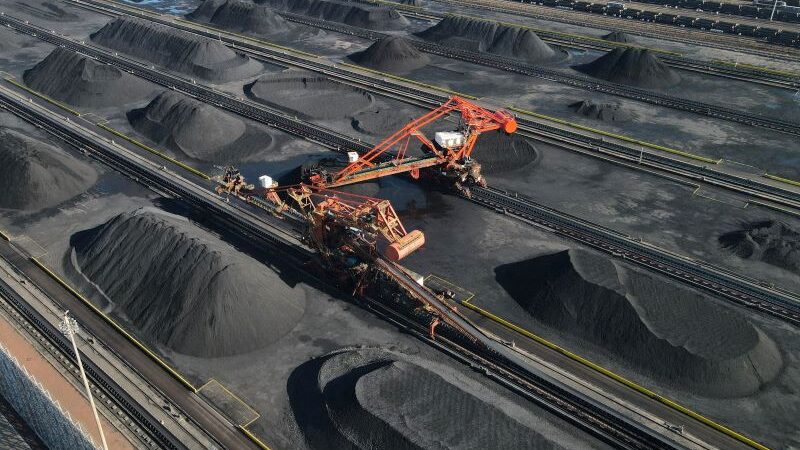China looks set to miss one of its key 2025 climate goals as the government is targeting only a “modest” cut to the amount of energy needed to power its economic growth this year, analysts said.
Beijing is aiming to reduce its energy intensity – the amount of energy consumed per unit of its gross domestic product – by 2.5% in 2024, according to a government policy work plan published on Tuesday at the opening of the annual National People’s Congress.
The target falls short of the rate of reduction needed to hit a goal of slashing energy intensity by 13.5% in the five years to 2025, energy analysts noted.
China is already lagging way behind that goal. Energy intensity fell by only 2% between 2020 and 2023 as the country powered its economic growth with carbon-intensive sources like coal, recent analysis by the Helsinki-based Centre for Research on Energy and Clean Air (CREA) found.
‘Admitting defeat’
“China is effectively admitting its failure to fulfill the five-year target,” Li Shuo, director of the China Climate Hub at the Asia Society think-tank, told Climate Home. “This year’s target is even more modest than the average rate of reduction needed, while they should be playing catch up.”
Lauri Myllyvirta, a senior fellow at the Asia Society and co-founder of CREA, said that China is “basically admitting defeat” with this “very important metric”.
“The [2.5%] target is completely inadequate to get China back on track towards its 2025 goals,” he added. “It is very alarming that the government is not articulating a plan on how they are going to hit an internationally-pledged target.”
How to hold shipping financially accountable for its climate impacts
The energy intensity goal is one of the main climate commitments made by the Chinese government in its current five-year plan and is also referenced in the country’s nationally determined contribution (NDC), submitted to the UN under the Paris Agreement.
China set the target in 2021, but a year later it watered down the rules when it stopped counting energy consumption from renewable sources. “It’s essentially a fossil-fuel intensity target now,” said Myllyvirta.
A similar goal of reducing China’s carbon intensity – CO2 emissions per unit of economic output – by 18% is also at serious risk of being missed unless emissions fall dramatically over the next two years.
Emission cuts vs growth
China is the world’s biggest carbon emitter and juggles its emissions-cutting targets with Beijing’s desire to boost economic growth and maintain energy security.
The Asia Society’s Li said this year’s government work plan “does not really prioritise climate and environmental issues in light of the difficult domestic economic conditions”.
Germany uses funding to pressure climate groups on Israel-Gaza war
It does, however, indicate strong support for clean energy, saying the government will “further advance the energy revolution” and “strengthen the construction of large-scale wind power and photovoltaic bases”.
But it also says the government will continue to recognise the role of coal power in its energy system and “increase the exploration and development of oil and gas”, suggesting China is not yet planning to start transitioning away from fossil fuels, as countries agreed to do at Cop28 in December.
Renewables and coal leader
The country is already both a global leader in renewable energy and a primary backer of coal power.
In 2023 it doubled its solar capacity after installing as many solar panels as the whole world had done in the previous year, according to the International Energy Agency. Wind power capacity also rose by 66% last year.
But it also has more than half of the coal-fired generating capacity operating globally. That is likely to increase as China has more coal power capacity under construction than the rest of the world combined, according to an analysis by the Global Energy Monitor.
